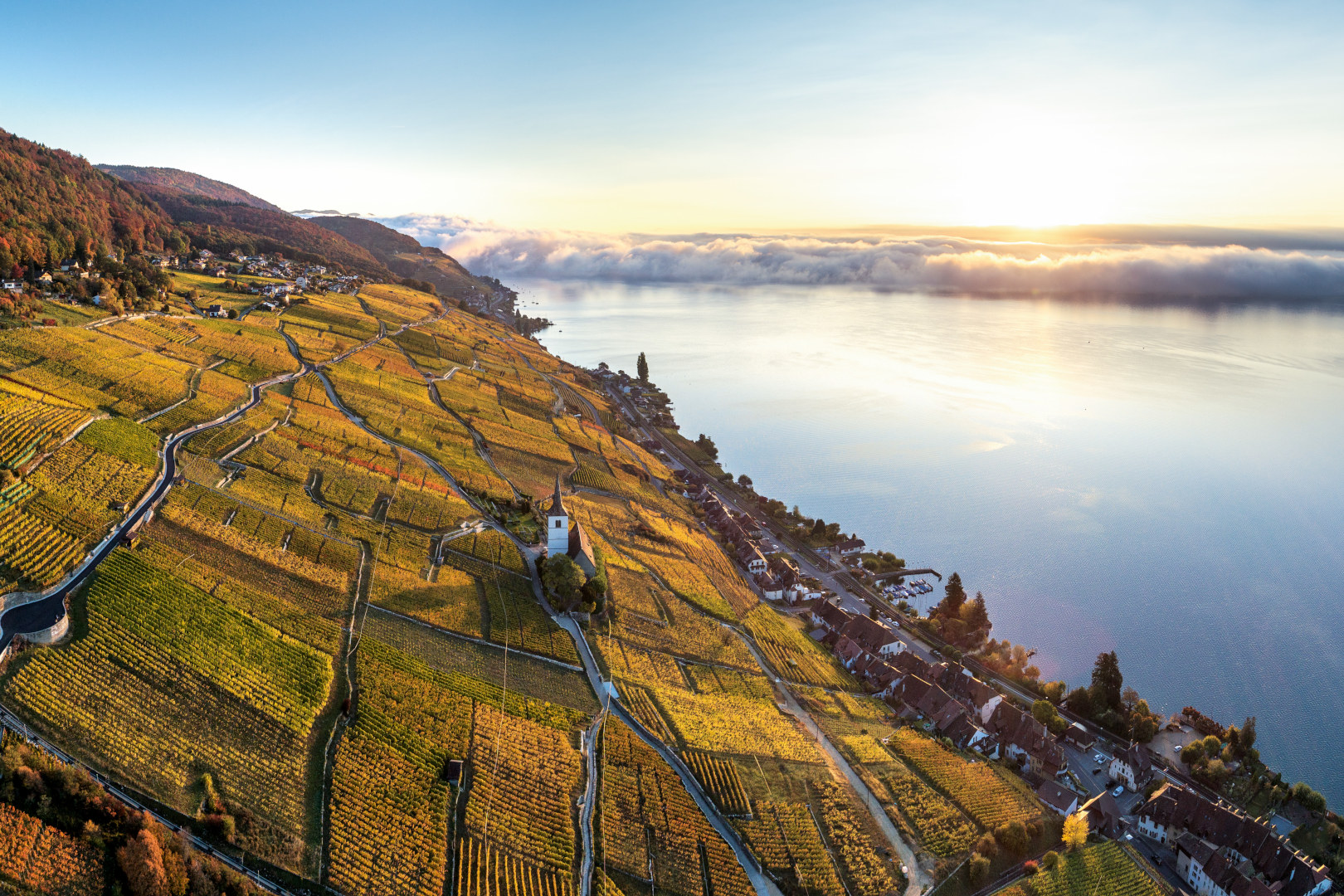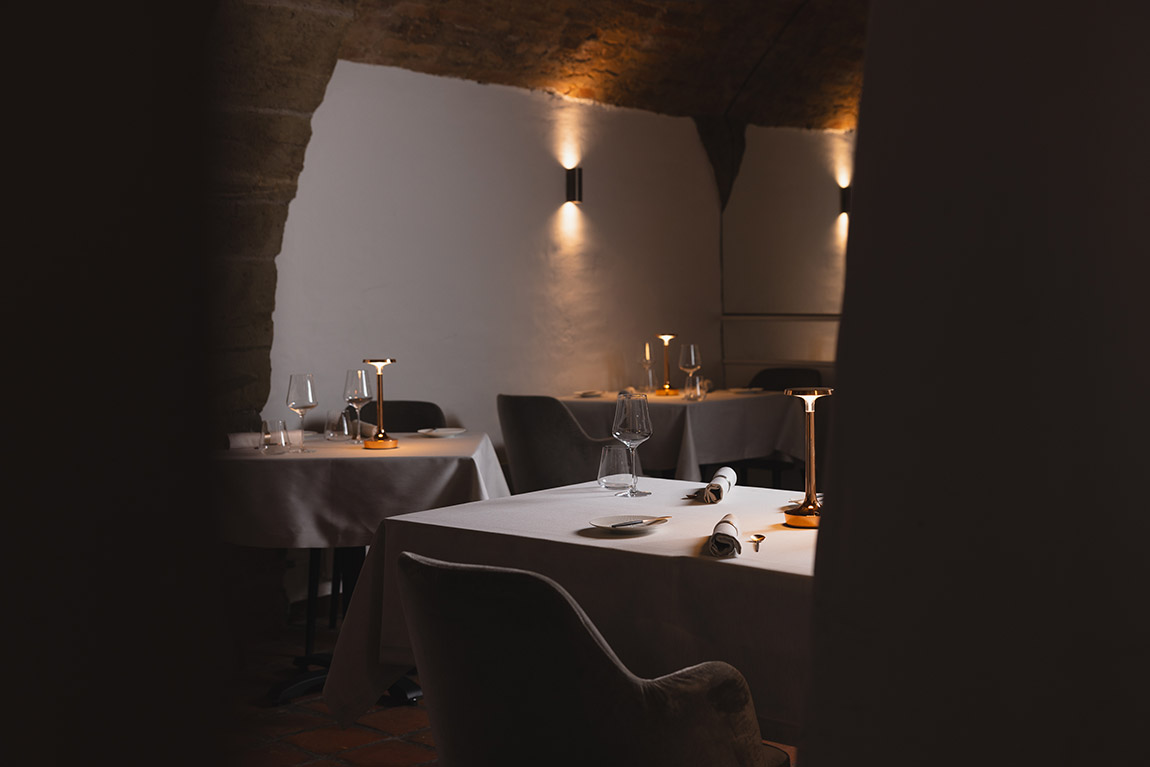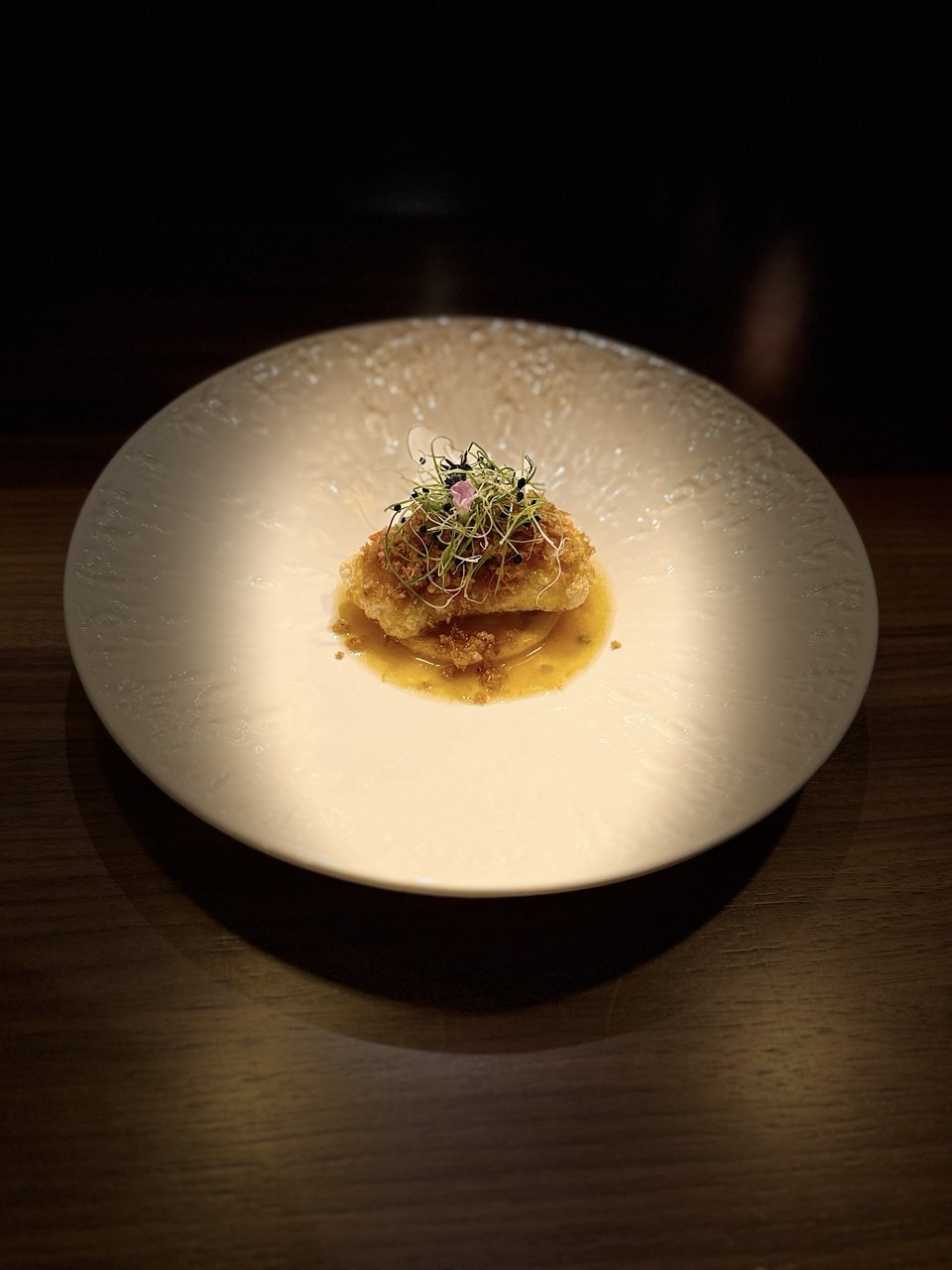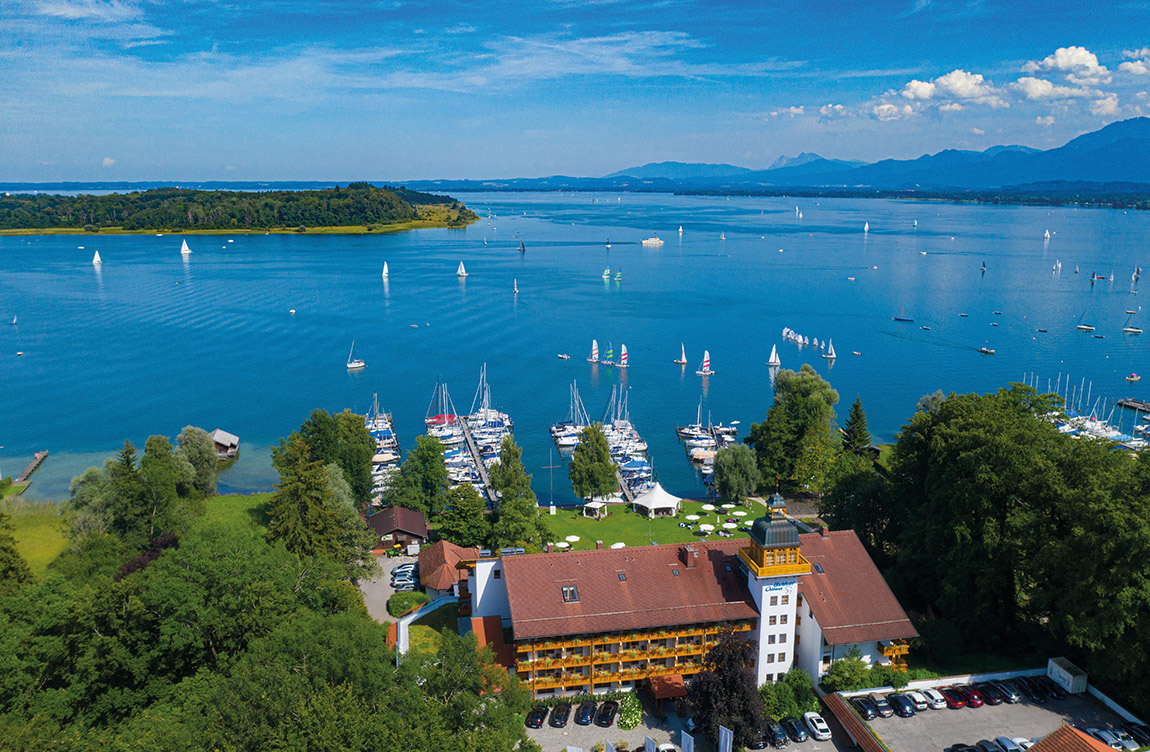Top ten wines of the DACH region

It’s time once more for wrapping up, getting cosy in front of the fire, reading books or binging on your favourite TV shows, all while enjoying a nice glass of fine wine. And for this, we have what might be a new wine tip for many: wines from the DACH region (Germany, Austria and Switzerland)! Find out which delectable wines from the region to try this autumn, in the following feature.
TEXT: NANE STEINHOFF | MAIN PHOTO: MORNING MOOD OVER THE VINEYARD OF LIGERZ WITH THE VIEW TOWARDS BIEL. © SWISS-IMAGE.CH/ROMAN BURRI
Wine harvesting in Europe usually occurs from late August to early October which makes the season the perfect time to appreciate and discover some new wines. While some are likely to have tried German wines before, as the country is renowned for its excellent white wines and gorgeous wine-growing regions, you probably haven’t tried wine from Austria and Switzerland before – which is something we want to change. After all, wine-producing regions in the DACH region are known to produce a dazzling variety of whites and reds, ranging from fruity to spicy, dry to sweet, and many more.

Tement winery, Austria. Photo: © ÖWM / Anna Stöcher
Austria, for example, counts towards one of the top countries in the world in terms of production standards and impresses with its refreshing whites and elegant, dry reds. Switzerland, on the other hand, has around 15,000 hectares of vineyards and has been making wine for more than 2,000 years. Due to the fact that the country has, prior to now, primarily produced its wines for Swiss consumption, the lack of international fame for these gorgeous wines can somewhat be explained. Things are gradually changing, however, as the world beyond the Alps is discovering the great taste and quality of Switzerland’s fine wines.
We hope you do, too – and that’s why Discover Germany takes a look at the DACH region’s top-ten wine varieties.
1) Grüner Veltliner (Austria)
The Grüner Veltliner is a dry white wine that almost only grows in Austria. While there are about 50,000 acres of Grüner Veltliner worldwide, over 75 per cent of Grüner Veltliner wines come from Austria. The wine impresses with subtle flavours of zesty lime, white pepper and green pepper and thus reminds a little bit of Sauvignon Blanc. What makes this wine so unique is its signature acidity, that practically explodes in one’s mouth. High-quality Grüner Veltliner wines will therefore have a delicate, tingly aftertaste. As far as food pairings go, try Grüner Veltliner with sushi or Mexican dishes with coriander.
2) Riesling (Germany)
You have probably heard of Riesling before, as it is Germany’s flagship wine. But what is it exactly? The wine variety dates back to the 15th century and originates in Germany’s Rhine valley. Today, it is still grown extensively and constitutes more than one-fifth of all wine varieties grown in the country, while a whopping 60 clones of white Riesling are also produced. It impresses with fruity and flowery tones, as well as a high acidity level which goes well with fish and pork or even spicy Asian cuisine.

Left to right: A Riesling. Photo: © Deutsches Weininsitut, DWI | Austrian Blaufränkisch. Photo: © ÖWM / Armin Faber | Silvaner. Photo: © Deutsches Weininsitut, DWI
3) Petite Arvine (Switzerland)
Last but not least, we introduce another of Switzerland’s popular varieties that needs to be tried at least once in your lifetime: Petite Arvine. As a white grape variety that has been grown in Switzerland’s Valais for at least 500 years, its taste is characterised by bracing acidity, grapefruit aromas and often also a touch of salty minerality. Many people have said that Petite Arvine wines count towards Switzerland’s best. Pair with melted raclette cheese or pan-fried white fish for matches made in heaven!
4) Silvaner (Germany)
This white wine grape variety is primarily grown in Alsace and Germany. In fact, it has been an important part of the country’s wine culture for almost four centuries and constitutes about seven per cent of Germany’s wine production. Due to its full-bodied taste with a mild acidity level, it should be enjoyed with salads, tapas, shellfish and grilled fish. A fun anecdote about this variety: it is referred to as ‘Dracula wine’, as it’s an old, pale wine that is ruined if exposed to direct, bright sunlight for too long.

Photo: © Deutsches Weininsitut, DWI
5) Spätburgunder (Pinot noir, Germany)
One of the most popular red wine varieties that is grown in all of Germany’s 13 wine-producing regions is the Spätburgunder, which has also won many Decanter awards. As the variety is grown in all regions with different climates and soils, the tastes differ slightly. One thing all varieties have in common, however: the savoury and elegant taste with hints of strawberries, cherries, boysenberries and almonds, which can be perfectly paired with rich, hearty dishes. A perfect match for the colder months.
6) Zweigelt (Austria)
As the most planted red wine variety in Austria, the Zweigelt is quite famous. It is a lighter red wine which is rarely oaked and reminds the taster of Grenache or Gamay. For those that want to try this variety, we suggest giving the wine around an hour to decant, as its initial taste might be a bit bitter. After letting it stand for a while, the wine will develop its signature deeper, more fruity taste, with notes of black cherry and raspberry, which goes perfectly with traditional dishes like ‘spätzle’ or ‘schnitzel’.

Vineyards in Southern Styria, Austria. Photo: © Österreich Werbung, Leo Himsl
7) Müller-Thurgau (Germany)
The Müller-Thurgau, also known as Rivaner, is a white grape variety which was created in 1882 and is now widely planted in all of Germany. As a cross between Riesling and Madeleine Royale grapes, it is one of Germany’s slightly newer breeds. Many people enjoy its sweet taste, fruity aromas and low acidity, which goes well with fish and shellfish dishes.
8) Chasselas (Switzerland)
While over 200 grape varieties are grown in Switzerland, the white Chasselas is one of the most popular, making up 27 per cent of the country’s total production. As this variety tends to ripen early, it is a good match for the country’s cool Alpine slopes. Its taste is hard to describe, but pairing the wine with different cheeses and cheese fondue is recommended, as its acidity is sure to slice through the fat.

Bernard Derron in his Domain du Vieux Moulin at Mont Vully, Motier. Photo: © swiss-image.ch/Andre Meier
9) Blaufränkisch (Austria)
Another top wine from Austria is the Blaufränkisch variety. It is the country’s champion, age-worthy red wine with hints of acidity and blackberry, tart cherry, tannin and slight citrus-spice notes. As the taste is quite hard to compare to anything else, we suggest trying it for yourselves. One suggestion, however: it is perfectly paired with grilled foods and therefore is the perfect companion for a barbecue.
10) Gamay (Switzerland)
A cross between Pinot and Gouais Blanc, the red Gamay grape probably originated in Burgundy. In Switzerland, it is an important variety that produces wines with cherry and peony notes. It is a light-bodied, fruity red that tastes quite similar to Pinot Noir. It can be paired with a variety of dishes, and even fish.

Oberbergen, Germany. Photo: © Deutsches Weininsitut, DWI
Subscribe to Our Newsletter
Receive our monthly newsletter by email





